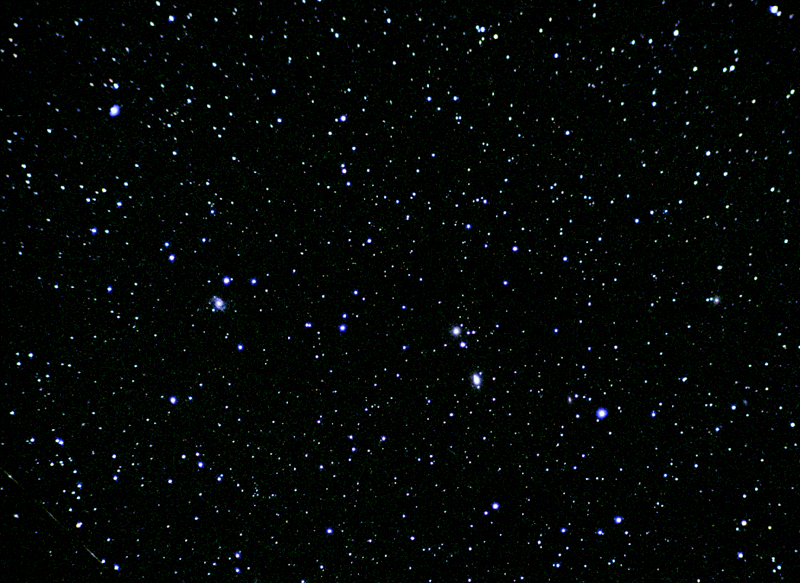
35 minutes exposure, Fuji Provia 400 wide format slide film.
300mm f/2.8 Pentax lens.

In the southern sky, in the region of the constellations Dorado and Reticulum, there are a large number of galaxies visible. One of the brightest of these is NGC 1566, a beautiful face-on spiral galaxy with two graceful arms that are visible in an 10" telescope. The galaxy is also quite bright, at magnitude 9.6, so it is easily visible in a small telescope. It is one of the easiest galaxies for discerning the spiral arms and would be much better known if it were in the northern sky. NGC 1566 has a very bright, active nucleus, and is one of the brightest Seyfret galaxies in the sky. This galaxy is also one that has annoyed me in the past. I noticed a star close to the nucleus that initially had me quite excited about the possibility of it being a supernova. Unfortunately it turned out to be a mistake on the supernova search charts!
In the photograph below there are many other galaxies visible. The brightest of these are NGC 1549 (magnitude 10.7) near the centre of the image, and NGC 1553 (magnitude 10.3) a little below NGC 1549. NGC 1566 is left of centre while near the right hand edge is NGC 1533 (11.7) and below it NGC 1536 (13.2). To the right of NGC 1553 is NGC 1546 (11.8).

Altogether there are about 30 galaxies brighter than magnitude 16 in this photograph, so there are plenty of observing challenges for owners of 20" or larger telescopes.